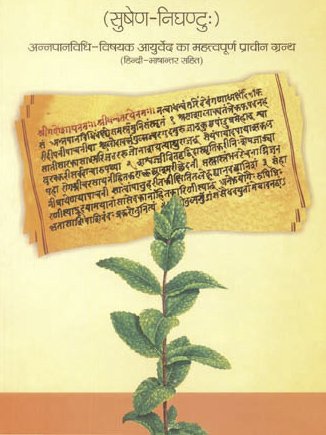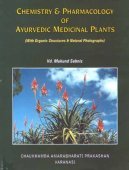Allium sativum: 3 definitions
Introduction:
Allium sativum means something in Hinduism, Sanskrit, biology. If you want to know the exact meaning, history, etymology or English translation of this term then check out the descriptions on this page. Add your comment or reference to a book if you want to contribute to this summary article.
In Hinduism
Ayurveda (science of life)
Veterinary Medicine (The study and treatment of Animals)
Source: Asian Agri-History: Paśu Āyurvēda (Veterinary Medicine) in GaruḍapurāṇaAllium sativum (in Sanskrit: rasona) is used in the Viśodhana (“washing off the wound’s impurities”) of wounds (vraṇa), according to Āyurveda sections in the Garuḍapurāṇa.—[...] After Viśodhana (wash off the ulcer's/wound's impurities by medicated decoction), the following formulations can be used for śodhana (purification) and ropaṇa (healing) externally:—[... e.g.,] The eraṇḍa-mūla (Castor root), two types of haridrā (Turmeric), Citraka (Plumbago zeylanica), Viśvabheṣaja (Zingiber officinale), Rasona (Allium sativum) and saindhava (rock salt) are ground well with takra (butter milk) or kāñjī (sour gruel). [...]
Unclassified Ayurveda definitions
Source: Yoga Magazine: AyurvedaAllium sativum (“Garlic”) in Ayurveda is called “the wonder food”. It is a very pungent root, and it is from the Aliaceae family. In Sanskrit it is called rasona, in Hindi lasan, and in Marathi lasoon. It gives strength to the body, and is especially good for the heart. It is included in almost all forms of Indian curries, although it is not eaten by very puritanical sects like Vaishnavites because it is reputed to be an aphrodisiac. It is also eaten raw with oil and chillies as chutney, or with salt as a blood cleanser and for nervous disorders such as headaches and hysteria.

Āyurveda (आयुर्वेद, ayurveda) is a branch of Indian science dealing with medicine, herbalism, taxology, anatomy, surgery, alchemy and related topics. Traditional practice of Āyurveda in ancient India dates back to at least the first millenium BC. Literature is commonly written in Sanskrit using various poetic metres.
Biology (plants and animals)
Source: Google Books: CRC World Dictionary (Latin names; Binomial nomenclature)Allium sativum L. is the name of a plant defined in various botanical sources. This page contains potential references in modern medicine, Ayurveda, and other local traditions or folk medicine. It has the following synonyms: Allium arenarium Sadler ex Rchb., Allium arenarium Sadler & Fl. Pesth. ex Rchb., Allium arenarium Thunb., Allium arenarium Wahlenb., Allium arenarium L., Allium controversum Schrad. ex Willd., Allium controversum Schrad. Cat. Goett. ex Willd., Allium controversum Costa, Allium longicuspis Regel, Allium ophioscorodon Link, Allium pekinense Prokhanov, Allium sativum f. pekinense (Prokh.) Makino, Allium sativum subsp. ophioscorodon (Link) Holub, Allium sativum var. controversum (Schrad. ex Willd.) Nyman, Allium sativum var. ophioscorodon (Link) Döll, Allium sativum var. pekinense (Prokh.) F.Maek., Allium sativum var. subrotundum Gren. & Godr., Allium sativum var. sativum, Allium sativum var. vulgare Döll, Allium scorodoprasum var. viviparum Regel, Porrum ophioscorodon (Link) Rchb., Porrum ophioscorodon Rchb., Porrum sativum (L.) Rchb., Porrum sativum Rchb., Porrum sativum Mill..
References regarding Allium sativum L. for further research on medicinal uses or toxicity:
· Species Plantarum (1753)
· Gardeners Dictionary, ed. 8

This sections includes definitions from the five kingdoms of living things: Animals, Plants, Fungi, Protists and Monera. It will include both the official binomial nomenclature (scientific names usually in Latin) as well as regional spellings and variants.
See also (Relevant definitions)
Full-text (+235): Lashuna, Grinjana, Vellulli, Mahaushadha, Ugragandha, Ulli, Tori, Rasonaka, Lahasun, Acanam, Velluli, Arishtha, Mahusudha, Alalhoum, Rasun, Attankal, Arakacam, Faom, Iletitacceti, Cocanam.
Relevant text
No search results for Allium sativum; (plurals include: Allium sativums) in any book or story.
Related products




